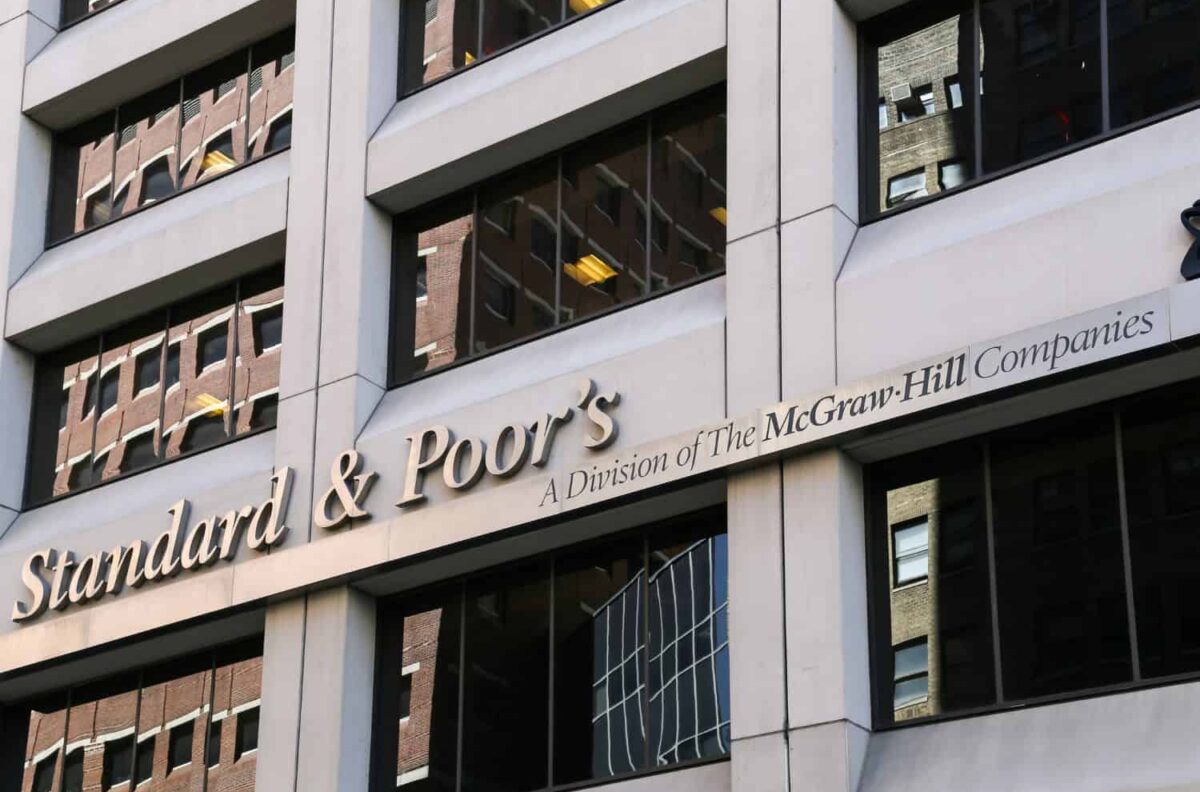Is South Africa finally breaking free from junk status after 20 Years? S&P thinks so

South Africa gets first S&P credit upgrade in 20 years. Image Credit: iStock
South Africa has secured its first major credit upgrade in two decades, marking a potential turning point for an economy that has battled years of slow growth, fiscal pressure and investor scepticism. Standard & Poor’s (S&P) Global Ratings announced the landmark upgrade on Friday, lifting the country’s long-term foreign currency rating from BB- to BB and the local currency rating from BB to BB+, with a positive outlook.
The upgrade reflects improving economic conditions, stronger fiscal discipline and declining risks tied to state-owned enterprises, particularly Eskom, which has recorded its first profit in eight years.
A Major Confidence Boost After Years in Junk Status
S&P’s upgrade marks the first time since the early 2000s that South Africa’s credit profile has moved upward rather than downward. For a country stuck in junk status for years, the development signals renewed confidence from global markets.
According to S&P, reduced pressure from Eskom and improved debt management played a significant role in the revised rating. The agency also upgraded South Africa’s Transfer & Convertibility assessment to BBB-, putting the country on the edge of regaining investment-grade territory if momentum continues.
The National Treasury welcomed the upgrade, calling it a sign that efforts to stabilise public finances and stimulate growth are beginning to show results.
READ ALSO
Is Sipho Mbule becoming South Africa’s most important midfielder again?
Economists Say the Upgrade Was ‘Widely Expected But Still Significant’
Professor Raymond Parsons from the NWU Business School described the move as a “welcome milestone” for South Africa’s financial recovery.
He emphasised that the rating uplift recognises improvements in the country’s fiscal position, better tax collection, and a more stable growth outlook. However, he warned that sustaining this momentum is now crucial:
“To regain full global investment status, economic steersmanship must remain on track. Weaker growth would jeopardise the planned fiscal trajectory.”
According to S&P, economic growth is projected to rise to 1.1% in 2025, up from 0.5% in 2024, driven largely by increased private electricity generation and easing infrastructure bottlenecks.
Three Years of Primary Budget Surpluses Strengthen SA’s Case
One of the strongest contributors for the upgrade is S&P’s expectation that government will record a third consecutive primary surplus (revenue exceeding non-interest spending) in the 2025 fiscal year.
This reflects stricter expenditure controls, improving tax compliance, and less reliance on bailouts for struggling SOEs.
S&P forecasts ongoing fiscal consolidation through 2028, noting that Eskom’s improved financial stability is easing contingent liabilities that previously weighed heavily on South Africa’s credit profile.
What the Upgrade Means for Ordinary South Africans
While credit ratings may seem distant from everyday life, the long-term impact is substantial. Higher ratings lower government borrowing costs, attract foreign investment and boost business confidence.
eNCA reports that this could ultimately translate into:
- More stable interest rates
- Job creation as investor confidence rises
- Lower borrowing costs over time
- Improved investment flows into SA bonds
For the first time in years, analysts say South Africa may be on a pathway to eventually exit junk status, but only if current reforms continue.
What Could Push Ratings Higher or Lower?
S&P highlighted two scenarios:
Upside Scenario (Further Upgrade Possible)
- Faster and more effective economic reforms
- Sustainable fiscal surpluses
- Reduced SOE risks
Downside Scenario (Rating Could Slip)
- Weak governance or stalled reforms
- Rising debt or higher deficits
- Infrastructure constraints holding back growth
For now, the positive outlook suggests confidence that the coalition government will continue its consolidation efforts.
FAQ
1. Is South Africa still in junk status?
Yes, South Africa remains in junk status overall, but S&P’s latest upgrade moves the country closer to regaining investment grade. The positive outlook signals further potential upgrades if reforms hold.
2. Why did S&P upgrade South Africa’s credit rating?
S&P cited stronger economic growth prospects, tighter fiscal discipline, a third year of expected primary budget surpluses and reduced financial pressure from Eskom, which recorded a profit for the first time in eight years.
3. What does the credit rating upgrade mean for the economy?
It boosts investor confidence, lowers government borrowing costs and can stimulate economic growth. Over time, it can lead to more stable interest rates, improved bond investment and potential job creation.
4. How does Eskom’s performance impact the country’s credit rating?
Eskom’s previous financial struggles were a major risk to government finances. Its turnaround and reduced bailout requirements have significantly improved South Africa’s fiscal outlook, supporting the rating upgrade.
5. What is South Africa’s new S&P rating?
South Africa’s foreign-currency rating has been upgraded to BB, and the local-currency rating to BB+, both with a positive outlook.
6. What could lead to another upgrade?
Successful and faster economic reforms, continued fiscal surpluses, reduced SOE risks, and stronger GDP growth could push South Africa closer to regaining investment-grade ratings.
7. What could cause a downgrade or stable outlook?
Stalled reforms, weaker-than-expected growth, rising government debt, and infrastructure failures could prompt S&P to halt future upgrades.
8. How will this affect ordinary South Africans?
The upgrade can support lower borrowing costs, improved business confidence, more investment inflows, and potential job creation over the medium term.


